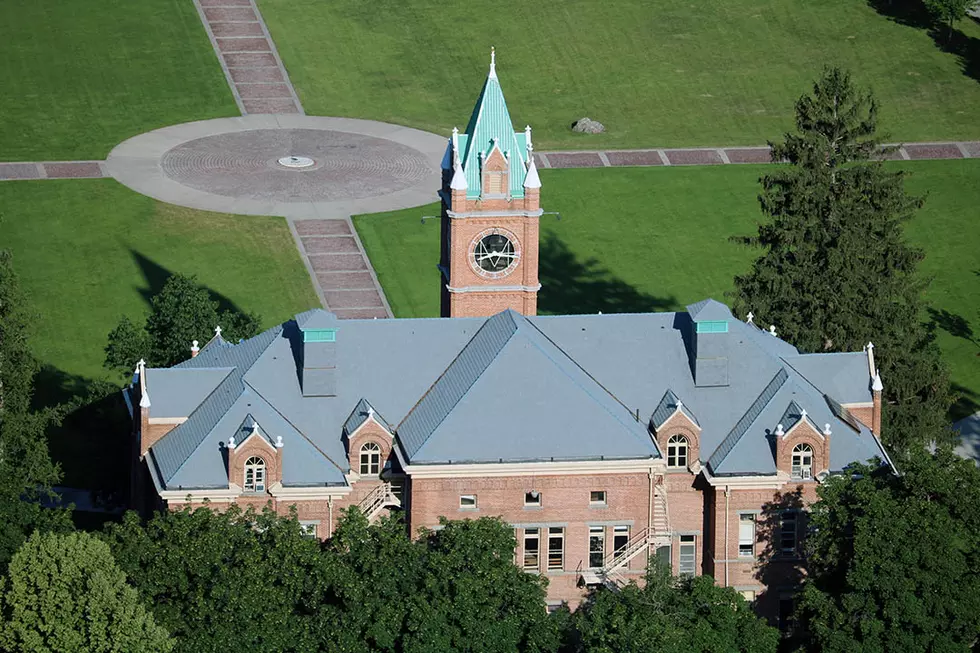
University of Montana graduate students form new union
Keila Szpaller
(Daily Montanan) Graduate students at the University of Montana in Missoula have formed a union after two years of organizing, and with more than 400 eligible members, it will be one of the largest in the state.
The Department of Labor and Industry certified the UM Graduate Employees Union last week, according to the Montana Federation of Public Employees.
“Our organizing message was simple,” said Colette Berg, an organizing lead and UM graduate employee, in a statement from MFPE. “Graduate employees’ wages, benefits, and working conditions aren’t keeping up with Missoula’s cost of living or honoring our roles in research, teaching, and learning. Everyone realizes we’re a lynchpin for UM, and we look forward to bargaining collectively with UM’s leadership to collaboratively address the challenges GEU members face.”
The labor movement has been active in the U.S. in recent years, including in Missoula, where the cost of housing has far outpaced wages. However, the proportion of workers who belong to a union has generally declined in the country during the last couple of decades.
Graduate students are especially difficult to organize because they are spread across a campus and work on different contracts that can range from two to five years, according to the Montana Federation of Public Employees.
According to the Montana State University Graduate Employee Organization in Bozeman, they’re also not easy to sustain. The Graduate Employee Organization counts 169 members.
MSU Graduate Employee Organization President M Wittkop said a graduate student union has challenges that are different from other locals. That’s because a campus union is made up of students — whose members by definition are constantly graduating and moving on.
MSU graduates formed their student union in 2015, according to the Office of the Commissioner of Higher Education. Bozeman also has notoriously high housing costs.
A report from an April 2024 graduate union assembly in Bozeman said the local will need new members in order to avoid dissolution. However, Wittkop also said the union has driven significant wins for its members, including in 2023.
“We got one of the biggest raises across the board for all graduates,” Wittkop said.
The increase amounts to roughly $100 more a month for the minimum allowable stipend a graduate student can be paid, or currently $760 a month, they said. The minimum will go up another $100 on Aug. 1.
“We also put in more strict limits on how many classes a TA (teaching assistant) can be assigned and changed language around work environment to protect students against ‘PI abuse,’” Wittkop said.
(That’s the potential abuse of power a thesis advisor or PI, a principal investigator, might enact over a student, they said.)
The graduate union also completed a cost of living survey, which among other things, showed 45% of respondents had skipped “necessary medical care” to save money, and 46% had skipped meals or eaten less to save money.
Additionally, the survey found 57% of graduate students needed second jobs, such as pet sitting, while in school. Of 826 graduate assistants, 184 responded to the 2024 survey, according to the union.
Wittkop said they believe the union has the potential for longevity if it can find new members, but the current challenge is broadcasting its existence.
“We’re going to have to really put in the work to find these people,” Wittkop said.
The Montana University System already counts 23 collective bargaining agreements covering roughly 2,374 people of an estimated 9,000 total employees, according to the Office of the Commissioner of Higher Education. That doesn’t include the new union at UM.
Faculty at the Bozeman campus formed a union that was approved in 2011 but then decertified in April 2013, according to the Commissioner’s Office.
At UM, a faculty union and classified staff union have long been active, and MFPE President Amanda Curtis said the organization looks forward to supporting the new graduate student union as well. Berg could not be reached for additional comment.
“We are so proud of the graduate employees at UM who have now organized and certified Montana’s largest new union in years,” Curtis said in a statement. “Their commitment to ensuring graduate employees have a strong voice in their working conditions and wages is what unionism is all about.”
A couple of years ago, the Missoula Tenants Union formed in the Garden City, and nurses at Providence St. Patrick Hospital recently — and visibly — renegotiated their contract; signs advocating support for the nurses popped up across the community.
The Montana Federation of Public Employees said collective bargaining at UM has been marked by a respectful and fair relationship between union members and university leadership for decades.
In an email, UM spokesperson Dave Kuntz said the university worked with the Department of Labor and Industry and the Commissioner’s Office throughout the process — clearly defined in statute — with graduate students.
“Graduate students are critical to UM,” Kuntz said in an email. “Their scholarship, research, and teaching help to advance our entire state and address many of the most pressing issues facing society.”
The labor movement has been historically strong in Montana. Last year, roughly 13% of workers were represented by a union compared to roughly 10% of those in the U.S., according to U.S. Bureau of Labor Statistics.
The news release from Montana Federation of Public Employees said the state certified the new Graduate Employees Union at UM on June 25, and it is MFPE’s newest local with “full collective bargaining rights to secure a fair contract.”
